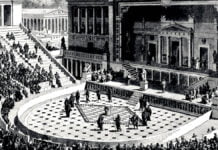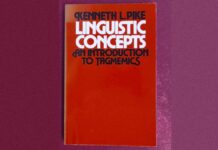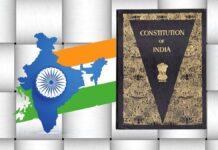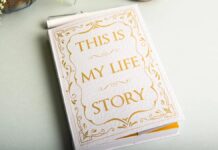The English language gives the liberty to use multiple adjectives to describe everything one can perceive. While adjectives can be used to describe and provide more information about a noun, there is a conventional order or hierarchy that native English speakers typically follow when using multiple adjectives together. Adjectives which describe opinions or attitudes usually come first before more neutral, factual ones.
E.g., She was wearing a striking red coat.
The proper order for adjectives in English is known as the Royal Order of Adjectives.
Determiner
Determiners are words that precede and modify nouns, indicating the specificity or quantity of the noun. Though not adjectives, determiners are included in the Royal Order of Adjectives. They must always come before adjectives and the nouns they modify. Examples include articles (a, an, the), demonstratives (this, that, these, those), possessives (my, your, his, her, its, our, their), and quantifiers (some, any, many, few, several).
Quantity
After determiners comes the quantity of the particular object in the second place. Examples include two, ten, a dozen, many, much, a few, several, etc.
Opinion
A person’s opinion, evaluation, or observation about a particular noun is placed in the third position in a sentence with multiple adjectives. These adjectives describe subjective qualities and characteristics. Just keep in mind that opinions can be general or specific. Examples include beautiful, ugly, precious, horrible, pretty, elegant, lovely, delicious, tasty, interesting, boring, etc.
Size
Adjectives that indicate the size or dimension of the noun come after opinion adjectives. These adjectives provide information about the physical dimensions or proportions of the noun. Examples include large, small, tall, short, big, tiny, etc.
Age
Adjectives that denote the age of the noun usually follow size adjectives. These adjectives describe how old or young something is. Examples include old, young, ancient, new, modern, etc.
Shape
Adjectives describing the shape or form of the noun come after age adjectives. These adjectives provide information about the physical contours or configuration of the noun. Examples include round, square, rectangular, triangular, etc.
Colour
Adjectives that indicate the colour of the noun are placed after shape adjectives. These adjectives describe the hue or shade of the noun. Examples include red, blue, green, yellow, black, white, etc.
Origin
Adjectives denoting the origin or source of the noun come next. These adjectives describe the nationality, ethnicity, or place of origin of the noun. Examples include American, Italian, Chinese, French, etc.
Material
Adjectives that describe the material or composition of the noun usually follow origin adjectives. These adjectives provide information about the substance or material from which the noun is made. Examples include wooden, plastic, metal, silk, cotton, etc.
Qualifier
Adjectives that provide additional information or clarification about the noun are placed last. These adjectives may include purpose, function, or other distinguishing features. Examples include sleeping, cooking, racing, etc.
Examples
- We got a huge wooden wall cupboard made for our friend’s new home.
(determiner / opinion / material) - Have you seen the ancient Portuguese synagogue in Cochin?
(determiner / age / origin) - Dias chose to stay in a tiny old apartment until he found a better apartment close to his office.
(determiner / size / age) - I saw a cute little white cat on the way home.
(determiner / opinion / size / colour) - Mazeeka asked all of her bridesmaids to wear soft red silk sarees for her wedding.
(opinion / colour / material)
- We got a huge wooden wall cupboard made for our friend’s new home.
Adjectives Joined by ‘and’
When more than one adjective occurs after a verb, such as be (a linking verb), the second last adjective is normally connected to the last adjective by and.
E.g., Home was always a warm, welcoming place. Now, it is sad, dark and cold.
And is less common when more than one adjective comes before the noun (e.g. a warm, welcoming place). However, we can use and when there are two or more adjectives of the same type or when the adjectives refer to different parts of the same thing:
E.g., It was a blue and green cotton shirt.
The reason for this somewhat complex hierarchy has yet to be fully understood. Still, it arises from the innate grammatical structure of the language and potentially how our brains process descriptive information about objects. Adhering to this sequence tends to sound ‘right’ to a native speaker, while deviation can sound jarring or awkward, even though it may still be grammatically correct. It’s important to note that not all adjectives will fit neatly into this order, and there may be exceptions depending on context and style. However, following this general order can help ensure clarity and coherence when using multiple adjectives to modify nouns in English sentences.





























